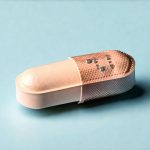Childbirth is arguably one of the most transformative experiences a woman can undergo, both physically and emotionally. While often celebrated as a beautiful culmination of nine months of anticipation, it’s crucial to acknowledge that bringing life into the world places significant stress on the female body. This isn’t necessarily a negative aspect – rather, understanding these physiological changes empowers women to proactively address any challenges that may arise post-partum. One common, yet often unspoken, consequence of childbirth is bladder weakness, also known as urinary incontinence. It’s a condition that can affect women of all ages, but its incidence dramatically increases following pregnancy and delivery.
It’s important to dispel the myth that bladder weakness is simply an inevitable part of motherhood. While it’s incredibly common – impacting a substantial percentage of new mothers – it isn’t something women must silently endure. There are many effective strategies for managing and even reversing these issues, ranging from lifestyle adjustments to pelvic floor exercises and, in some cases, medical interventions. This article will delve into the intricate link between childbirth and bladder weakness, exploring the underlying causes, different types of incontinence that can develop, and proactive steps women can take to regain control and confidence. The goal is to provide a comprehensive understanding of this often-sensitive topic, fostering open conversation and empowering informed decision-making regarding pelvic health.
Anatomical & Physiological Changes During Pregnancy & Childbirth
The female pelvic floor – comprising muscles, ligaments, and connective tissues – plays a vital role in supporting the bladder, uterus, bowel, and other pelvic organs. Think of it as an internal hammock holding everything in place. During pregnancy, this intricate system undergoes substantial stress. The growing uterus places increasing pressure on the bladder and urethra, weakening the pelvic floor muscles over time. Hormonal changes, particularly increased levels of relaxin, further contribute to ligament laxity, making the pelvic floor less stable. This isn’t necessarily detrimental during pregnancy – it allows for necessary expansion and flexibility – but it sets the stage for potential problems post-partum.
Childbirth itself introduces another layer of stress. Vaginal delivery, in particular, can stretch and potentially injure the pelvic floor muscles. The sheer force exerted during pushing, even with a relatively short labor, can cause significant trauma. Episiotomy (a surgical incision made to widen the vaginal opening) or tearing during delivery further exacerbates this strain. While the body is remarkably resilient and often heals well, these changes can compromise the structural integrity of the pelvic floor, making it less effective at supporting the bladder. Even Cesarean sections aren’t without impact; while they avoid vaginal trauma, the weight gain and hormonal shifts of pregnancy still affect pelvic floor strength. If you’re concerned about potential complications after childbirth, exploring bladder stones can be helpful to understand related conditions.
Furthermore, the nerves that control bladder function can also be affected during childbirth. Nerve damage – even mild – can disrupt the signals between the brain and the bladder, leading to altered sensation or reduced muscle control. This neural impact is often overlooked but plays a significant role in some cases of post-partum incontinence. It’s important to remember that every woman’s experience is unique; factors like pre-existing pelvic floor weakness, multiple pregnancies, genetics, and individual anatomy all influence the extent of these changes. Understanding how mild burning might indicate underlying issues can also be beneficial.
Types of Bladder Weakness Postpartum
There are several distinct types of urinary incontinence that can develop or become apparent after childbirth. Understanding the difference between them helps in identifying appropriate management strategies. Stress incontinence is perhaps the most common type, characterized by involuntary urine leakage during activities that increase abdominal pressure – coughing, sneezing, laughing, exercising, or lifting something heavy. This occurs when the pelvic floor muscles are unable to adequately support the urethra, leading to a small amount of urine escaping. It’s often described as feeling like you’re “leaking” when putting strain on your bladder.
Urge incontinence, on the other hand, involves a sudden, intense urge to urinate followed by involuntary leakage. This is more about bladder overactivity – the bladder muscles contract unexpectedly, even when not full. It can be triggered by certain foods or drinks (caffeine, alcohol), changes in temperature, or simply happen without warning. Unlike stress incontinence, it’s less about physical exertion and more about a feeling of urgency. If you frequently experience urgency, understanding is it gas versus bladder discomfort can help differentiate symptoms.
A third type, mixed incontinence, combines features of both stress and urge incontinence. Women with mixed incontinence experience both involuntary leakage with activity and sudden urges to urinate. This is often the most challenging to manage as it requires addressing multiple underlying issues. Finally, there’s overflow incontinence, which is less common post-partum but can occur if the bladder doesn’t empty completely, leading to frequent dribbling. It’s more commonly associated with nerve damage or blockage. Recognizing which type of incontinence you are experiencing is a crucial first step towards finding effective relief. Some medications can contribute to bladder issues; it’s worth investigating bladder medications weight gain.
Rebuilding Pelvic Floor Strength & Function
Fortunately, many women can significantly improve their bladder control through targeted interventions. Pelvic floor exercises, often referred to as Kegels, are the cornerstone of treatment for stress and mixed incontinence. These exercises involve consciously contracting and relaxing the pelvic floor muscles, strengthening them over time. It’s essential to perform them correctly – imagine stopping the flow of urine midstream (although this should only be used for identification purposes, not a regular exercise).
- Begin by identifying your pelvic floor muscles.
- Contract the muscles as if you are stopping urination.
- Hold the contraction for a few seconds, then relax.
- Repeat 10-15 times, several times a day.
Consistency is key; it can take weeks or months to see noticeable improvements. However, simply doing Kegels isn’t always enough. It’s crucial to ensure you’re engaging the correct muscles and that your technique is effective. Consulting with a physiotherapist specializing in pelvic health is highly recommended. They can assess your individual needs, provide personalized exercise programs, and teach proper form.
Beyond exercises, lifestyle modifications can also play a significant role. Maintaining a healthy weight reduces pressure on the bladder; avoiding excessive caffeine and alcohol consumption minimizes bladder irritation; and managing constipation prevents straining during bowel movements (which further stresses the pelvic floor). Bladder training – gradually increasing the interval between urination – can help retrain the bladder to hold more urine, particularly useful for urge incontinence. It’s about consciously delaying urination when you feel the urge, starting with small increments of time and slowly increasing them as your bladder capacity improves. If cold temperatures exacerbate symptoms, learning how to prevent bladder irritation can be helpful. Remember that regaining pelvic floor strength is a journey, not a quick fix. Patience, consistency, and professional guidance are essential for achieving long-term results. Also consider the potential for repeated UTIs scar tissue if you experience frequent infections.
It’s vital to remember this information is intended for general knowledge and informational purposes only, and does not constitute medical advice. It is essential to consult with a qualified healthcare professional for any health concerns or before making any decisions related to your health or treatment.





















